Don Pasquale
Something about Don Pasquale
It is claimed that this exquisite Bel Canto opera was written in only 11 days. That could be true but one should consider the use of old, already-written material, something that was frequent at the time. Furthermore, the eleven days were not from a blank sheet to a complete opera, but more of an outline with all the leads and scenes in place.
Still, the extremely high working speed of the composer put significant strain on the relations between him and the people around him. In fact, the librettist Ruffini didn’t want to be associated with the opera. And that is why you sometimes see other names on the title page. Read more about that here.
The story was taken from Ser Marcantonio, an opera by Stefano Pavesi. The story is a simple and straightforward comedy with classical characters. The protagonist is modeled on the Comedia dell’Arte character Pantalone, a rich and greedy old fool often chasing after young women but who always remains cheated in the end (Compare Bartolo in The Barber of Seville).
A good story could be the basis for numerous titles both with music and without. Remember that music didn’t get around like today. A title was played locally and nobody really cared about where it came from, as long as it was entertaining. And Donizetti and Pavesi weren’t the only ones to use the text and outline of this particular story for their purposes.
In 1843, Donizetti was as well-established as anyone could ever dream of. He had written well over 60 operas of which some had become huge successes… Lucia di Lammermoor, La fille du régiment, and of course the outstanding L’elisir d’amore (The elixir of love). Don Pasquale would become his last really big success.
His last years were overshadowed by crippling poor health. The Maestro died on April 8, 1848.

Premiere – January 3, 1843, Salle Ventadour, Paris, France.
Composer – Gaetano Donizetti
Librettist – Giovanni Ruffini.
Running Time – Approximately 2 hours and 7 minutes, plus Intervals.
Three Acts
Ouverture – 7 minutes
First Act: ca 38 minutes
Second Act ca 36 minutes
Third Act ca 46 minutes
In Italian
Main characters
(I will use the descriptions made by Donizetti himself…)
Don Pasquale – Bass. Old celibate, old-fashioned, thrifty, credulous, obstinate, at the end of the day… a good man.
Dottor Malatesta – Baritone. A self-made, facetious, and enterprising man, though with a doctor’s title. A friend of Don Pasquale and a very good friend of
Ernesto – Light Tenor. Nephew of Don Pasquale. Young, enthusiastic, and requited lover of
Norina – Light lyric Soprano. Young widow who has suffered her share of hardship. Impatient with inconsistencies, but she is frank and affectionate.
Download this short Pdf-guide. Print it, fold it, and keep it in your pocket as a help when you’re at the Opera. Please keep your phone turned off when inside the theater.
Background – The Opera Don Pasquale is set in…
Rome
The location is the future Italian capital, but that is of no real significance. Neither is the time, that is set to the beginning of 1800.
You must know a few things about the situation before the curtain opens, though. And these are as follows:

Don Pasquale has no children and all his money and property (which is of substantial magnitude…) would fall into the hands of his son-in-law Ernesto in case of his death. Therefore Pasquale insists on marrying the young man to someone wealthy. Ernesto refuses though, as he is in love with Norina (who is relatively poor).
In fact, Don Pasquale has already found a suitable wife for Ernesto, but as he refuses, Pasquale has decided to take a wife himself. That way he will be able to have a child and cheat Ernesto of the heritage. But as he’s old and doesn’t feel comfortable courting young women, he has asked his good friend Dottor Malatesta to help him find a suitable partner.
Now, Malatesta is a friend not only of Don Pasquale’s but more so of Ernesto’s. So to help him and Norina achieve the blessings from the old uncle, he has planned to present Norina in disguise as the future bride of Don Pasquale. And she will take the role of Malatesta’s sister, Sofronia, a well-disciplined young girl fresh out of a convent. Norina is in on it, but Ernesto is not aware of what is happening. At least not yet…
Plot
Ouverture
7 minutes
First Act
Part 1 – The house of Don Pasquale.
Pasquale is waiting for Malatesta.
Dottor Malatesta enters. They talk and almost immediately the latter sings his most famous aria:
– Bella siccome un angelo, where he describes all the wonderful attributes of the future bride.
Malatesta announces that he himself will bring her to Don Pasquale that very evening.
Note how Donizetti doesn’t stop the music after the piece. Instead, he cheats the audience and Malatesta of the applause and continues straight into Don Pasquale’s next aria: Pasquale sings:
– Un foco insolito, where he explains how young he feels, at the idea of marrying.
Malatesta leaves and Ernesto enters. Now follows a short scene where Pasquale tells Ernesto about his marriage plans. When Ernesto hears who the declared wife is, he is terribly disappointed. Not only will he lose any hope of getting his hands on Pasquale’s fortune, but one of his closest friends,
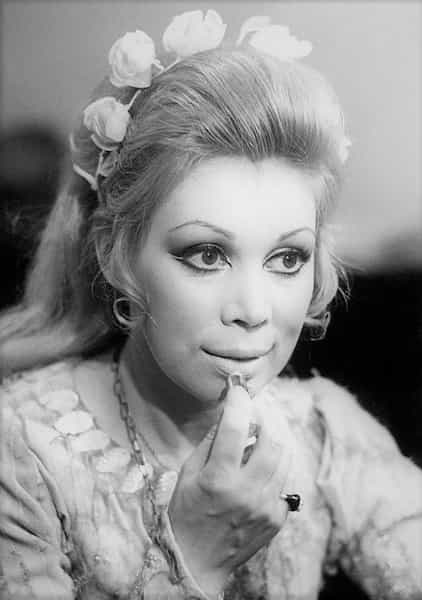
Malatesta has betrayed him and his beloved. (Remember, at this point, he’s not aware of the cunning plan…) All is lost, and he decides to leave his home, his family, and Norina forever:
– Mi fa il destin mendico… (Destiny makes me a beggar, I lose the one I adore. In whom I believed to be a friend, I discover a traitor!)
Part 2 – The house of Norina.
The scene starts with a long and demanding aria for the soprano. The first part is a citation of the book she’s reading (Compare L’elisir d’amore). In the second part, Norina laughs at the old, romantic idea of love. She considers herself modern and very knowledgeable in the art of seduction. Her heart’s love is still Ernesto though.
If you listen carefully you can hear a few musical jokes that Donizetti puts in the aria. The first part (when she talks about romantic love) is a typical Bel Canto aria in a slow 6/8 beat. The second part (when she talks about herself as a modern girl) on the other hand is an Allegretto in 2/4, like a slow dance melody. Towards the end, you can hear her sing a coloratura which really is a very common singing exercise (… to be prepared for the finale). There are lots of these small jokes that the audience of the 1800s would notice, but for a modern listener need to be evidenced.
– Quel guardo il cavaliere… So anch’io la virtù magica.
A servant comes in with a letter. It is from Ernesto. Then Malatesta enters and he reads it out loud: In his desperation, Ernesto is determined to leave Rome, the Kingdom, and Europe and bids farewell. The problem is that he writes that he is leaving today, right now.
Malatesta actually reads the letter with a perfectly normal spoken voice. Read more about that here.
Malatesta shakes his head at the young people’s foolishness. Then he reassures Norina that he will be in time to stop him. After that, he explains the marriage plan in detail. He actually instructs her how to play the part. The Act ends with a duet:
– A quel vecchio affé la testa…
Second Act
The house of Don Pasquale.
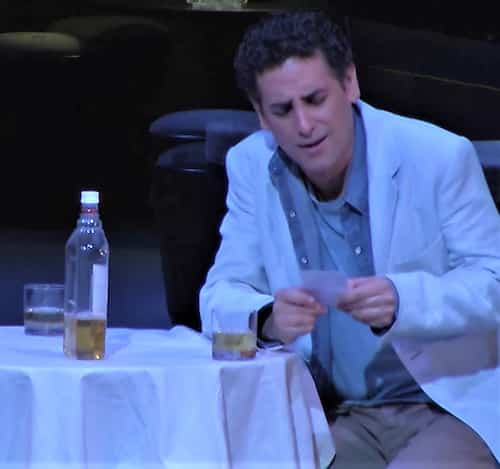
non lo voglio sopportar. (I am betrayed, trampled upon… this anticipated hell.
I won’t bear it.)
Third Act
Part 1 – Still at the house of Don Pasquale.
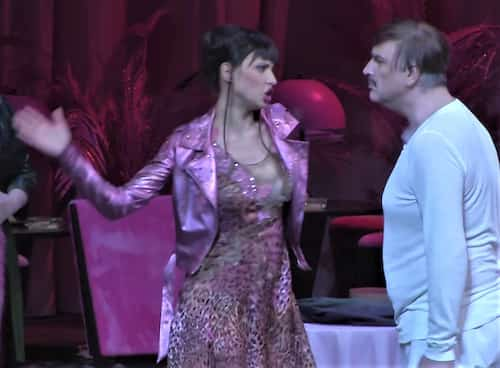
The Act begins with the myriad of servants who have invaded poor Don Pasquale’s house. The now-married man is desperate. The bills are never-ending and in his despair he makes one last effort to try to tame his tyrannic wife. It doesn’t go well. Norina actually slaps him, and the “married” couple sings a beautiful duet:
– Pasquale: It’s over, Don Pasquale, you have to break your head! You have nothing left but to drown yourself.
– Norina: The lesson is hard, but it needs to be to have an effect.
Norina is going to the theater but while leaving the room she intentionally drops a note on the floor. The message is from an admirer asking for a secret romantic meeting in the garden between 9 and 10. Pasquale sees an opportunity and asks a servant to call for Dottor Malatesta.
A short scene between Ernesto and Malatesta confirms that Ernesto is going to pretend to be Norina’s secret lover. He leaves and Malatesta confronts Pasquale.
This is one of the highlights of the evening. The two men sing a duet:
– Cheti cheti immantinente…
Don Pasquale’s plan is to expose them to the authorities, but Malatesta convinces him to just expose them and then threaten to call the police. (Of course, the accomplices can’t involve anyone else in their little scheme.) The scene finishes with another jewel
– Aspetta, aspetta, cara sposina, la mia vendetta già s’avvicina… (Take care, dear wife, my revenge is approaching.
While these one-note, very fast passages are not uncommon, it is very rare to have two singers, a baryton and a base, sing it together. This is a show-stopper.
Part 2 – The garden.
So the board is set for the final game.
Ernesto’s big moment has come. From off-stage, and together with the chorus, he sings his most famous aria:
– Com’è gentil, la notte a mezzo april!
It is a serenade accompanied by guitars, and it’s the cue for Norina to come forward… Which she does. The two come together with new hope for a happy ending. They sing the outstandingly beautiful duet:
– Tornami a dir che m’ami…
The conclusion is stringent and not very elaborated. Pasquale and Malatesta jump out, Ernesto manages to flee, and Norina/Mrs Pasquale claims to have been alone all along. Don Pasquale wants to throw her out but he can’t. So Malatesta steps in and declares to Don Pasquale’s big surprise that tomorrow Ernesto’s bride (Norina) will move in.
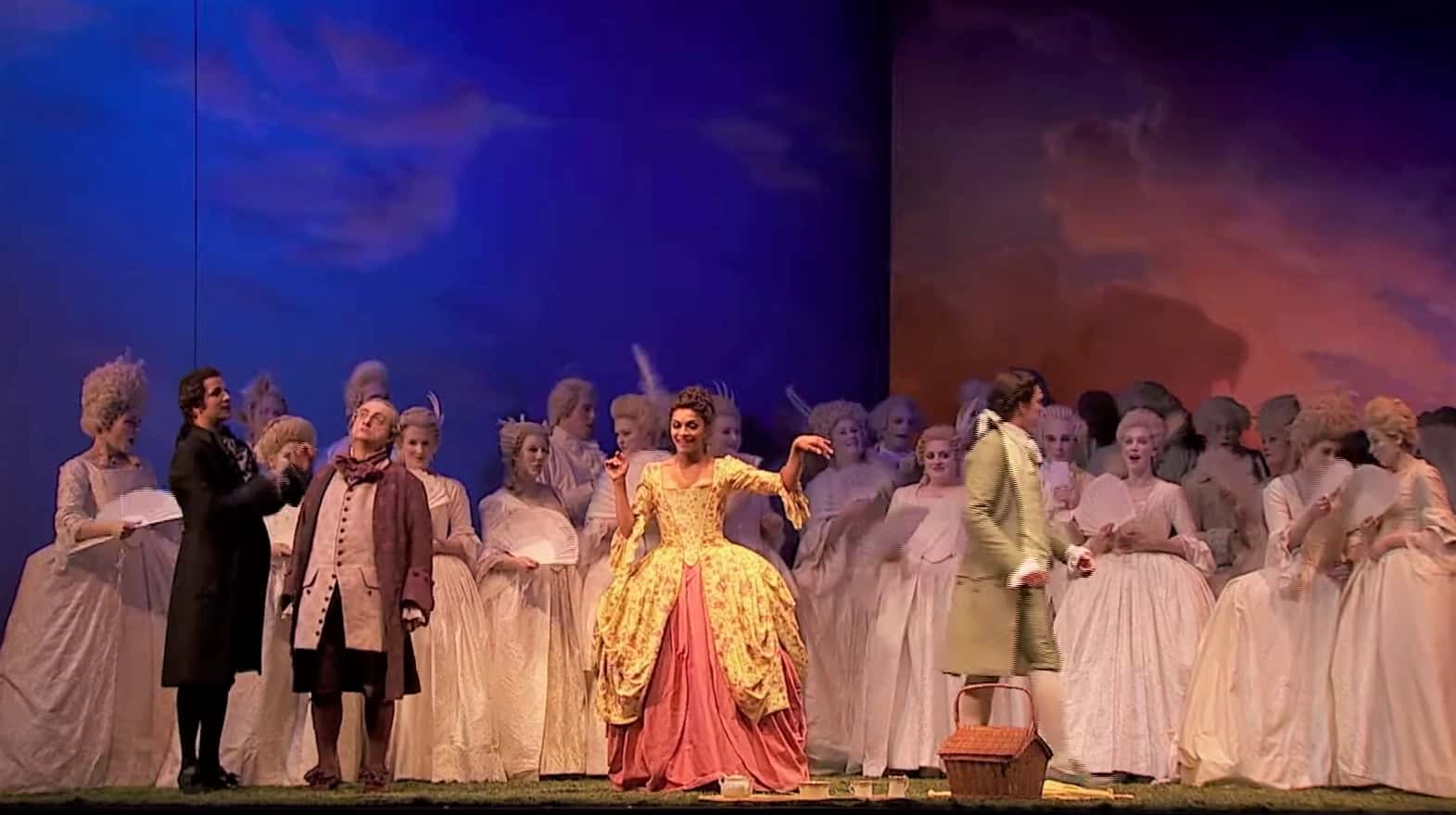
And on that, Mrs. Pasquale declares that she cannot live under the same roof as Norina, and threatens to leave (… Pasquale can’t wait!). Then Malatesta convinces Don Pasquale that the wedding between Norina and Ernesto has to be genuine to fool the angry wife and that the young couple should get a yearly allowance. At this point, the three accomplices come forward and reveal the plot.
The last words are Norina’s
– He who marries at an old age is pretty stupid; Willingly searching for troubles and an abundance of pain.
What to look out for.
First Act
3 minutes – Bella siccome un angelo. Malatesta’s big aria.
8 minutes – Un fuoco insolito. Don Pasquale’s first aria.
20 minutes – Norina’s aria Quel guardo il cavaliere… So anch’io la virtù magica.
28 minutes – Malatesta reads Ernesto’s letter in spoken words.
Second Act
Curtain up – Povero Ernesto. Ernesto’s self pity aria.
10 minutes – Norina is presented as Sofronia, Malatesta’s sister.
24 minutes – Norina’s metamorphosis after the documents are signed.
33 minutes – The very fast finale begins.
Third Act
6 minutes – Norina/Sofronia slaps Don Pasquale, and after they sing the duet: Ah! è finita, Don Pasquale.
12 minutes – Norina leaves and drops the note.
25 minutes – Aspetta, aspetta, cara sposina. Dona Pasquale’s and Malatesta’s up-tempo duet.
29 minutes – Ernesto’s big aria: Com’è gentil…
35 minutes – Tornami a dir che m’ami. Ernesto’s and Norina’s love-duet.
How Donizetti dropped the recitatives…
The word Recitative means “musical declamation of the kind usual in the narrative and dialogue parts of an opera, performed in the rhythm of ordinary speech with many words on the same note.” It corresponds to the spoken dialogue in a musical or an operetta.
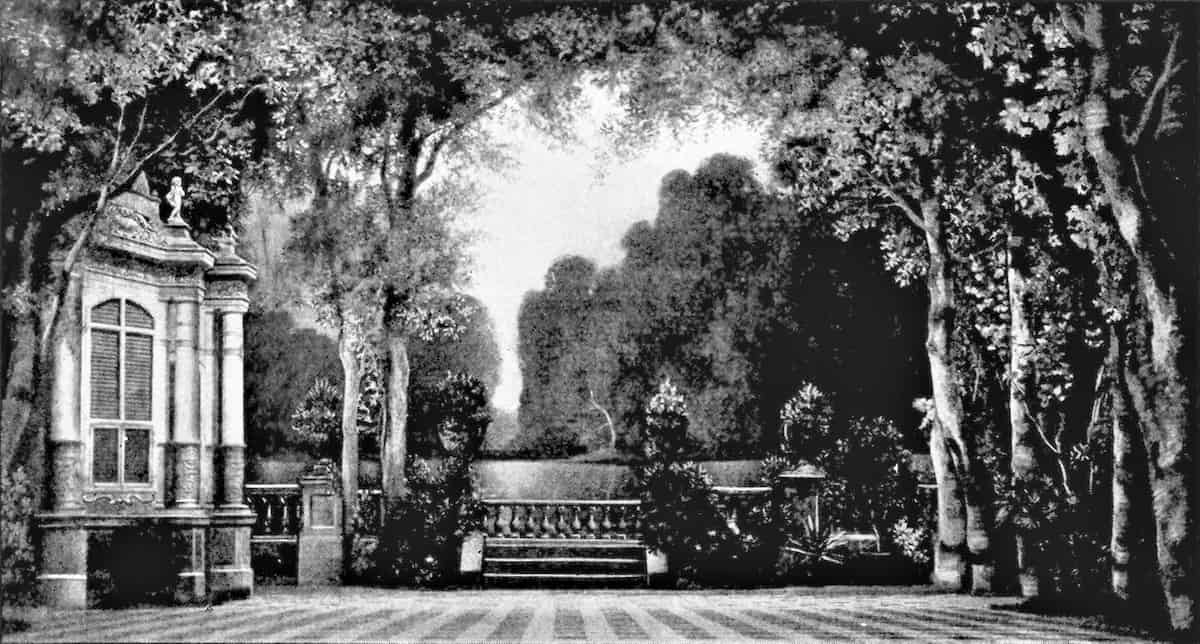
Recitatives were used in almost all operas until the 19th century. At the beginning of 1800 many composers began aiming at a performance that was more homogeneous and less divided into recitatives, arias, duets, trios, and choruses. Especially Richard Wagner was a strong proposer of the Opera as a unified art form, Gesamtkunstwerk.
Anyway, recitatives were normally separated into two forms… Secco (from Italian meaning dry) recitatives and Accompanied recitatives (with orchestra). The Secco recitative is accompanied by only a harpsichord and sometimes a cello. That way the singer has great liberties to accelerate or slow down, or to invent phrasing and accents pretty much as he likes.
And this is the type of recitative that Donizetti dropped. In Opera Seria, the tragic opera, the secco recitative had been omitted for some time, but in comic opera, this was the first time it happened. If you listen carefully, you can still hear some of the typical half-spoken style of the recitative but there’s the orchestra playing underneath, not a harpsichord.
The controversies of who wrote the text.

At the premier in Paris in January 1843 the libretto was not accredited at all. When it came to Italy and La Scala in Milan in April the text was accredited to a certain M.A. This mysterious figure was for many years thought to mean Michele Accursi. Well, in times without internet or even telephones, that isn’t much to quarrel about. But now, that we actually know who this Michele Accursi was, it is absurd to think that he could have written a libretto to an opera of this magnitude.
Accursi was something of a spy, a revolutionary working secretly to overthrow the Papal state and Kingdom of the Two Sicilies in Italy. Remember that these were turbulent times in Europe after the Napoleon wars and between the waves of the revolutions of the 1830s and the 1848s. For some reason, Accursi became an agent/impresario for Donizetti especially managing his affairs with Italy while he was stationed in France.
 The two brothers Giovanni and Agostino Ruffini were also revolutionary in spirit and when they came to Paris, fleeing the Italian authorities, they were immediately approached by Accursi. Agostino was the first to collaborate with Donizetti. Giovanni was the more qualified of the two though, and it was he who got the task to edit Pavesi’s opera Ser Mercantonio, with words by Angelo Anelli, and make it up to date.
The two brothers Giovanni and Agostino Ruffini were also revolutionary in spirit and when they came to Paris, fleeing the Italian authorities, they were immediately approached by Accursi. Agostino was the first to collaborate with Donizetti. Giovanni was the more qualified of the two though, and it was he who got the task to edit Pavesi’s opera Ser Mercantonio, with words by Angelo Anelli, and make it up to date.
But Donizetti wasn’t all that easy to work with, and the relationship between the two took many hard blows. Ruffini writes to his mother:
– The Maestro is killing me with his whims. He wants me to cut a word here or add a phrase there. All to fit his already-composed melodies. It completely ruins the little logic I have managed to create.
The M.A. of the Italian publication was later interpreted as Mano Anonimo – Anonymous hand. But Accursi actually had his name on the original contract drawn up by Ricordi. Ruffini was so fed up with Donizetti that he refused to have his name associated with the opera. So Accursi signed the contract on condition that his name wasn’t published anywhere. And hence the M.A.
Sometimes Donizetti’s name is put forward as librettist or co-writer. The composer probably edited more or less everything Ruffini wrote, but my interpretation is that that is not significantly more than any composer would do to make the words suit his music.
It is not controversial to suggest that the libretto was written by Giovanni Ruffini based on the work by Angelo Anelli, full stop.
Download this short Pdf-guide. Print it, fold it, and keep it in your pocket as a help when you’re at the Opera. Please keep your phone turned off when inside the theater.